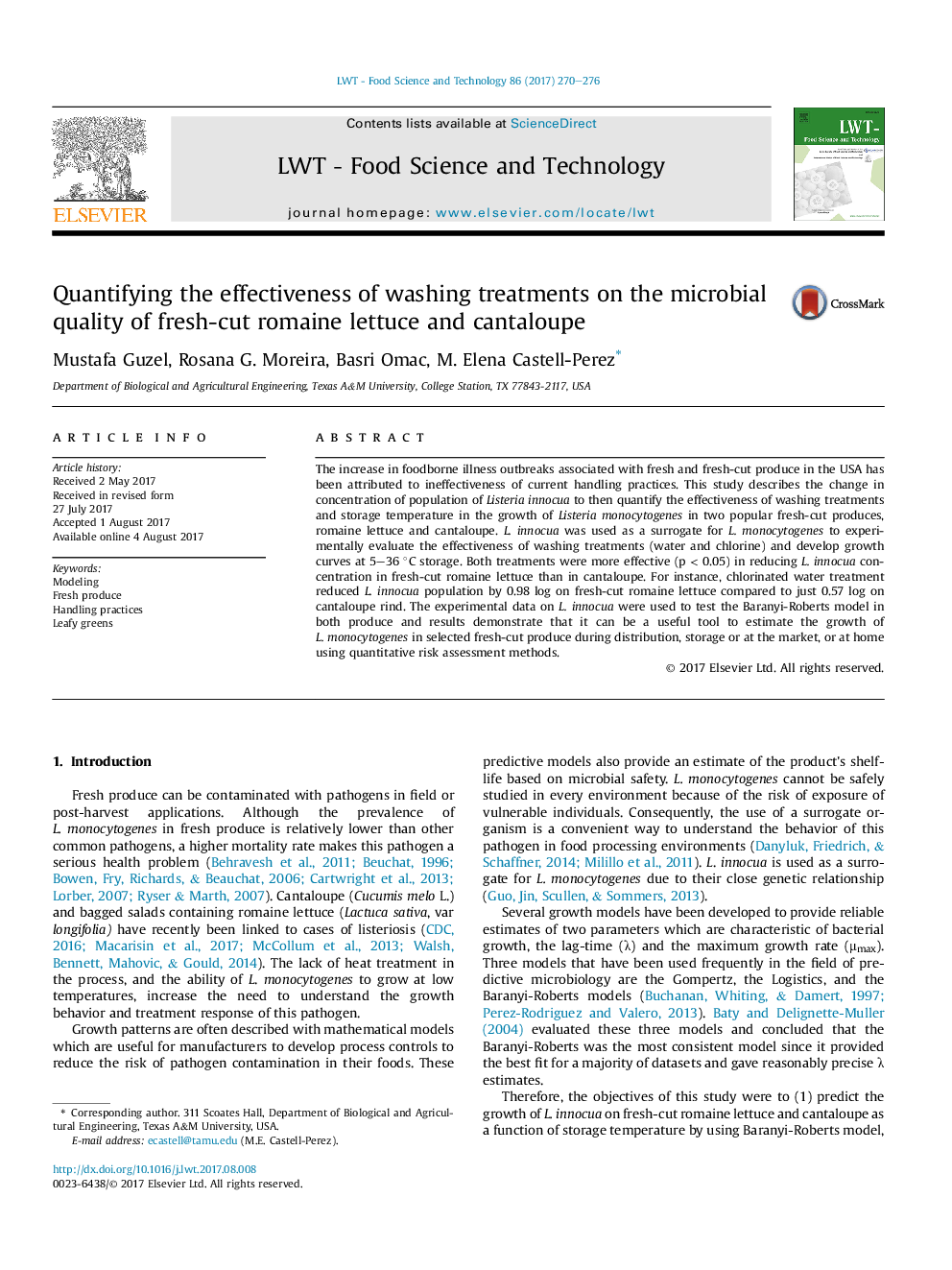| Article ID | Journal | Published Year | Pages | File Type |
|---|---|---|---|---|
| 5768686 | LWT - Food Science and Technology | 2017 | 7 Pages |
â¢The growth of L. monocytogenes in fresh-cut romaine lettuce and cantaloupe can be predicted using standard models.â¢Listeria innocua is a suitable surrogate for the pathogen.â¢Type of produce affects pathogen growth.â¢Storage temperature affects growth.
The increase in foodborne illness outbreaks associated with fresh and fresh-cut produce in the USA has been attributed to ineffectiveness of current handling practices. This study describes the change in concentration of population of Listeria innocua to then quantify the effectiveness of washing treatments and storage temperature in the growth of Listeria monocytogenes in two popular fresh-cut produces, romaine lettuce and cantaloupe. L. innocua was used as a surrogate for L. monocytogenes to experimentally evaluate the effectiveness of washing treatments (water and chlorine) and develop growth curves at 5-36 °C storage. Both treatments were more effective (p < 0.05) in reducing L. innocua concentration in fresh-cut romaine lettuce than in cantaloupe. For instance, chlorinated water treatment reduced L. innocua population by 0.98 log on fresh-cut romaine lettuce compared to just 0.57 log on cantaloupe rind. The experimental data on L. innocua were used to test the Baranyi-Roberts model in both produce and results demonstrate that it can be a useful tool to estimate the growth of L. monocytogenes in selected fresh-cut produce during distribution, storage or at the market, or at home using quantitative risk assessment methods.
